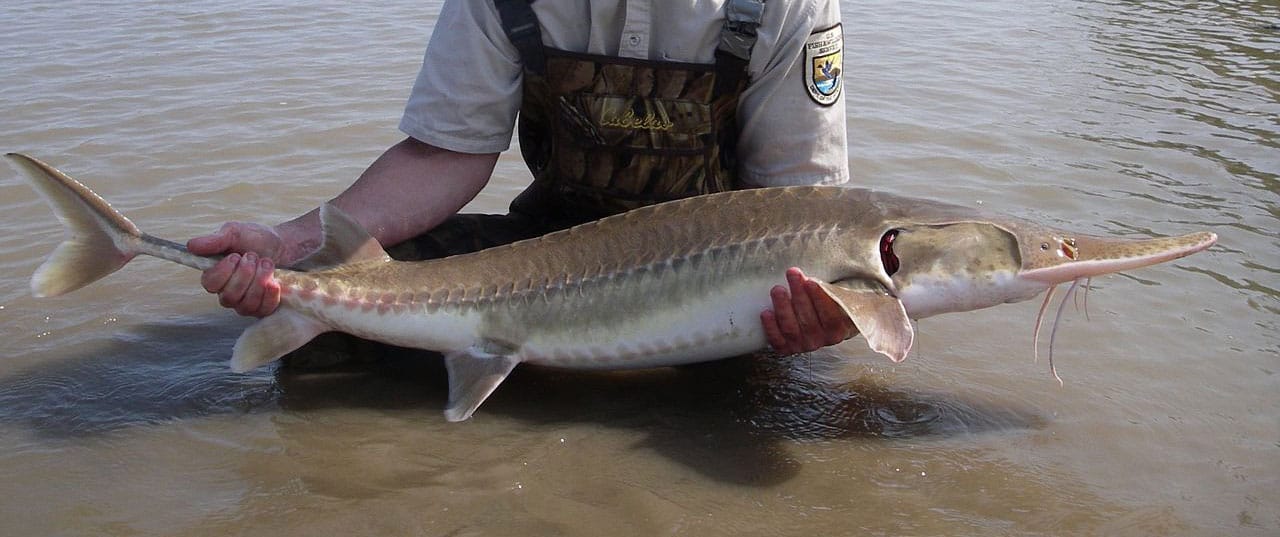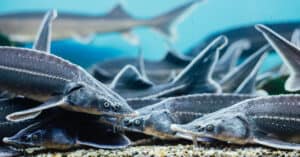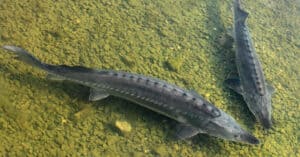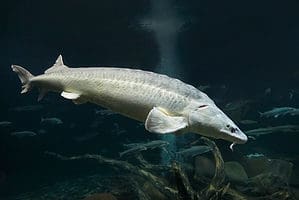
Even though they dwell at the bottom of rivers and lakes, sturgeons like to leap in the air.
©Chase D’animulls/Shutterstock.com
For generations, people have fished to provide food and money for their families, as well as to explore bodies of water and find what lurks beneath the surface. Fishing gives people time to reflect on themselves and remember they are part of a larger world.
Giant fish and sea monsters resonate with people’s imagination and fear of large creatures. Some are left in awe by how these grand fish can go unnoticed for decades.
These fish are behemoths that inspire mystery due to the fact they lurk so far beneath the surface. Meeting one in real life is rare. These fish can become so giant, they set records around the world.
What Are Sturgeons?
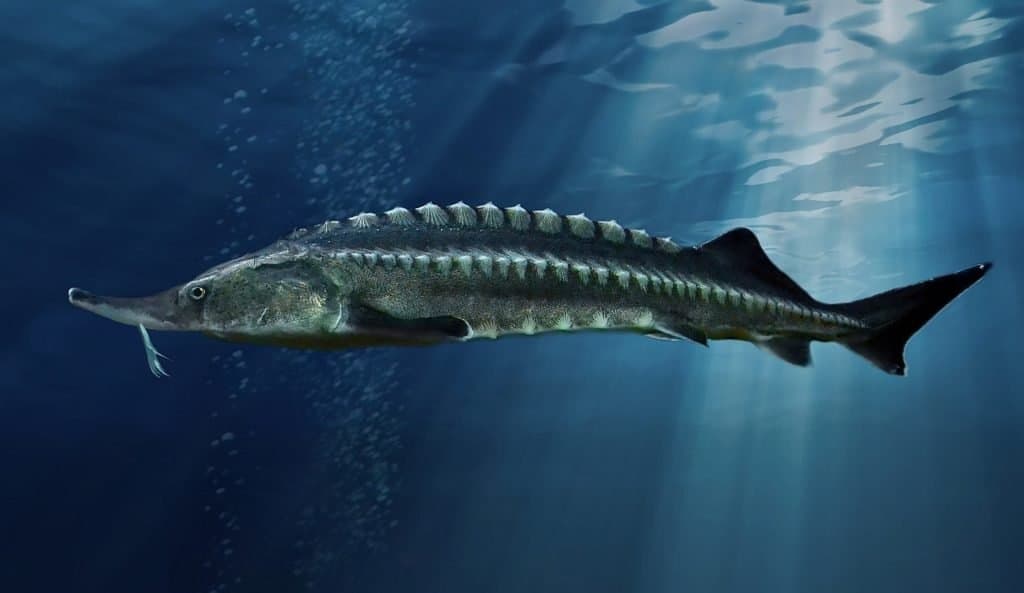
They do not have scales, but bony plates called scutes.
Sturgeons are fresh and saltwater fish that inhabit rivers and lakes across North America and Europe. They are a long-lived species, capable of living for 50-60 years in the wild. Some records even indicate sturgeons living for over 100 years!
They primarily feed on aquatic macroinvertebrates like mussels, mosquitos, spotted lanternflies, butterflies, and hornets. They can also eat small fish, snails, and crustaceans.
Sturgeons are popular fishing targets across North America. However, there are strict laws regarding them due to their status as critically endangered species in certain locations.
What is the Largest Sturgeon Ever Caught?
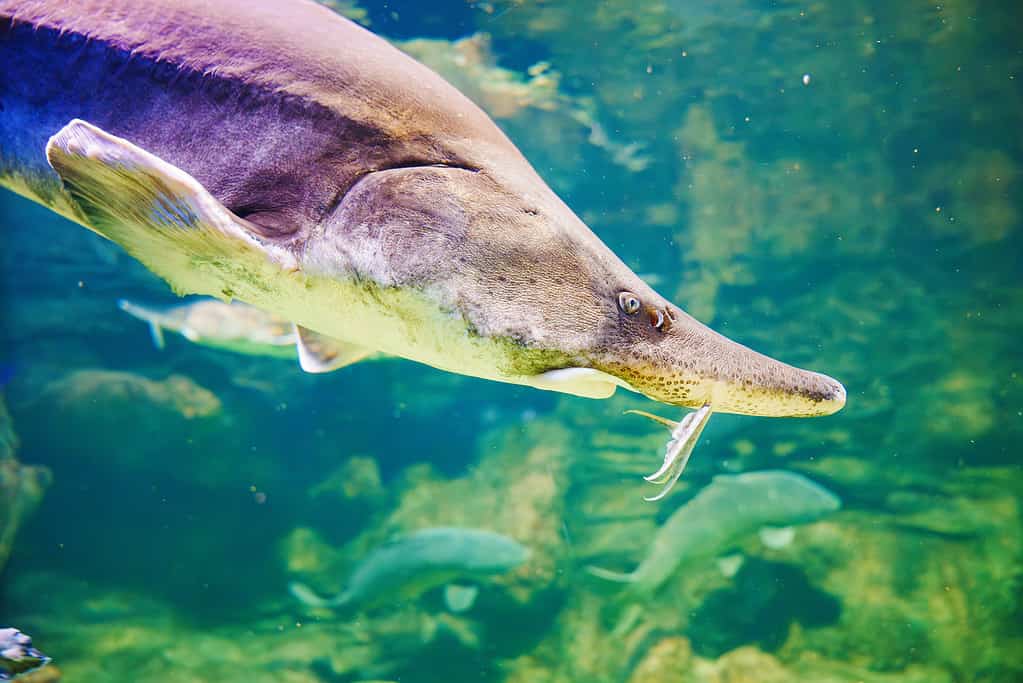
Beluga sturgeon
are highly valuable for their meat and black caviar.
©Andrey Sayfutdinov/iStock via Getty Images
The increase in game and sport fishing created the International Game Fish Association. Established in 1939, this international group catalogs and records all world record game fish.
To date, the largest sturgeon ever was a female beluga caught in 1827. It was 23 feet and 7 inches long, weighing 3,436 pounds. The fish was caught in the Volga Delta which runs through Europe and Russia.
Are There Other Record Sturgeon Catches?
Yes, because there are several different types of sturgeon, there are different records for each type.
Atlantic Sturgeon
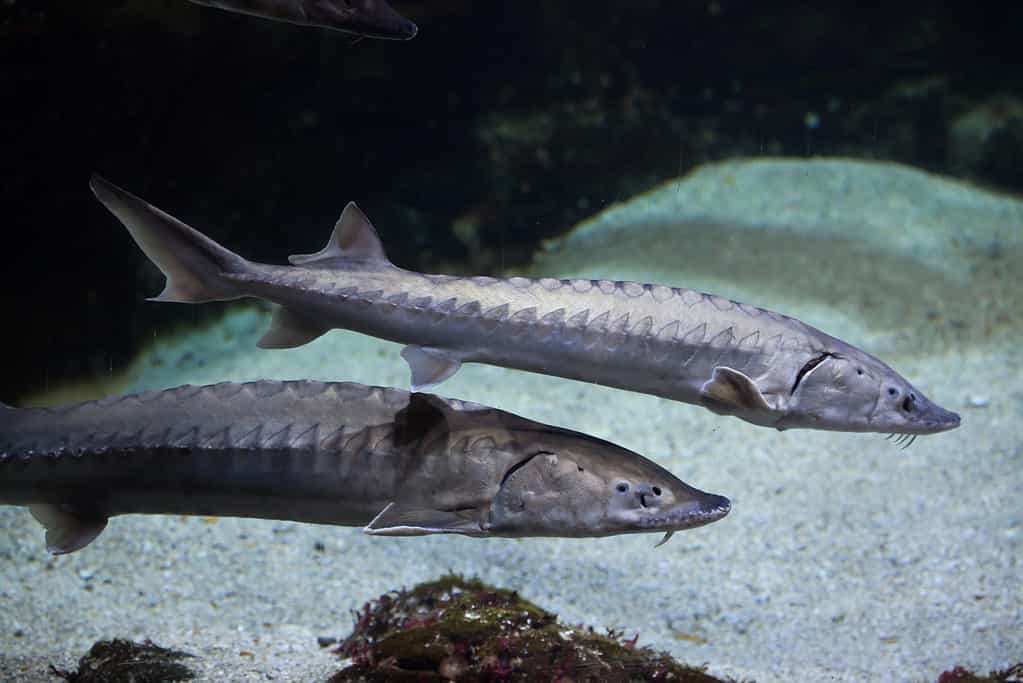
Atlantic sturgeons are also called European sturgeon because they can be found along the coast.
©wrangel/iStock via Getty Images
The Atlantic sturgeon live along the Atlantic coast from Labrador to Florida. Some species are seen living in the Mississippi Delta. These are smaller than their beluga cousins, reaching 5-6 feet long and weighing 90-160 pounds.
The largest Atlantic sturgeon was caught near Canada, weighed 811 pounds, and was 14 feet.
Lake Sturgeon
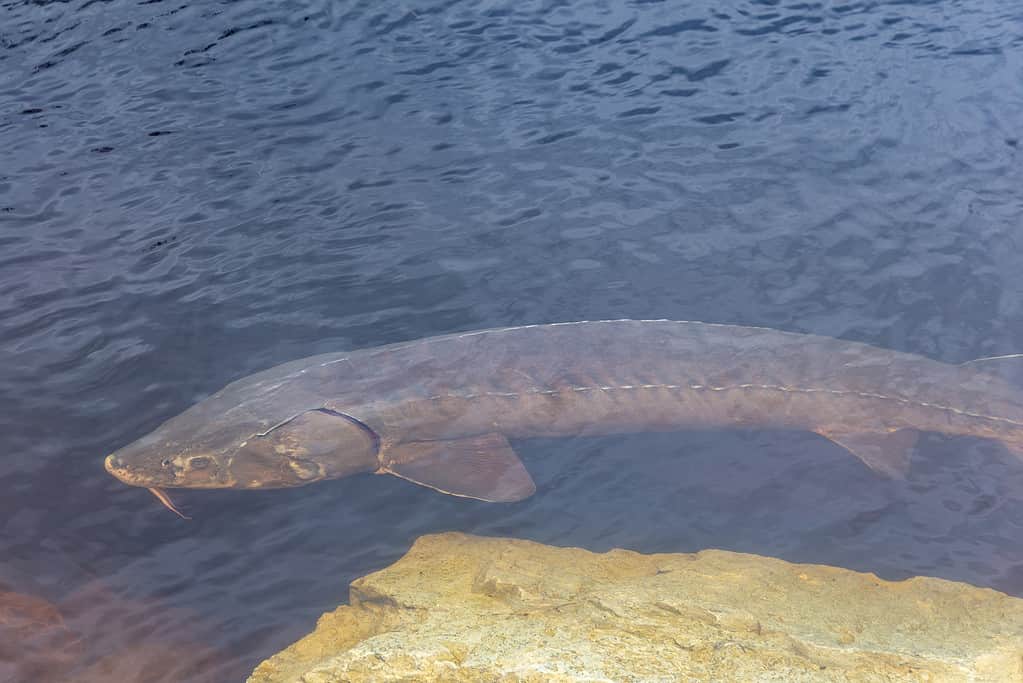
They can reach massive sizes because they live long lives with few predators.
©James Pintar/iStock via Getty Images
Lake sturgeon or rock sturgeon are specific freshwater fish that reside in lakes, as their name suggests. They are the oldest species of lake fish living within the Great Lakes of North America. On average, they can reach 6 feet and weigh nearly 200 pounds.
According to the IGFA, Edward Paszkowski reeled in a 168-pound lake sturgeon in Georgian Bay, Ontario Canada on May 29, 1982.
White Sturgeon
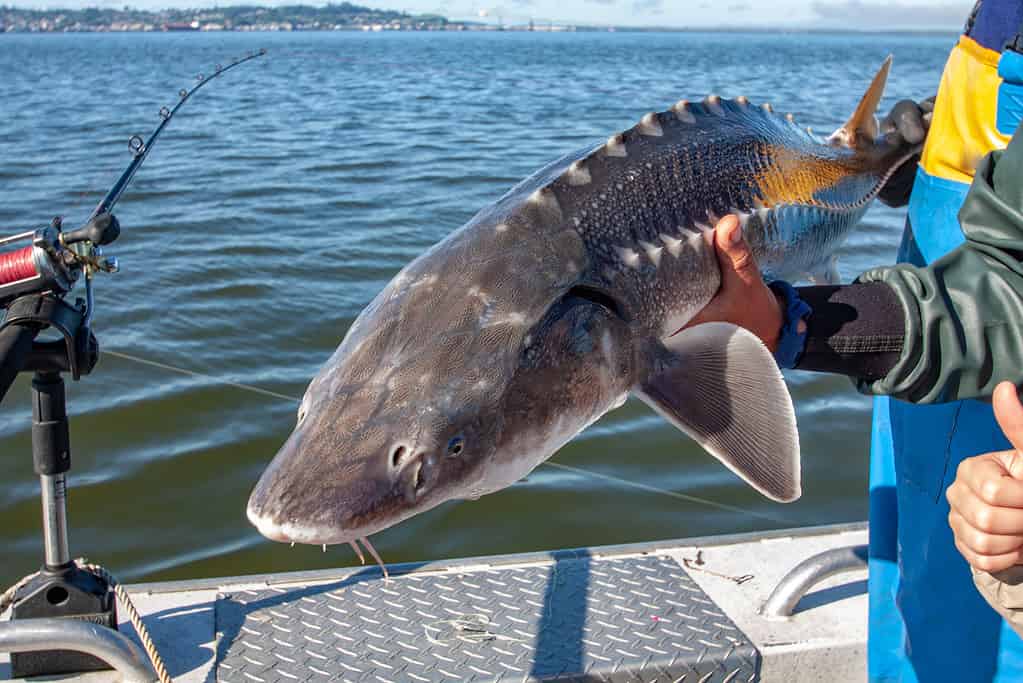
These fish do not reach sexual maturity until they are 20-25 years old.
©christiannafzger/iStock via Getty Images
White sturgeons are bottom-dwelling fish that are closely related to the green and beluga sturgeons. They live on the Pacific coast of North America, from Alaska to California. On average, they can reach 20 feet long and weigh 1800 pounds.
According to the IGFA, Joey Pallotta III reeled in a 468-pound white sturgeon in Benicia, California on July 9, 1983.
However, other reports indicate Joey Pallotta captured a larger fish not on record. This other fish was 11 feet and 7 inches long, weighing 1,100 pounds. He caught it in the Fraser River in British Columbia, Canada in 2012.
Notable Mentions
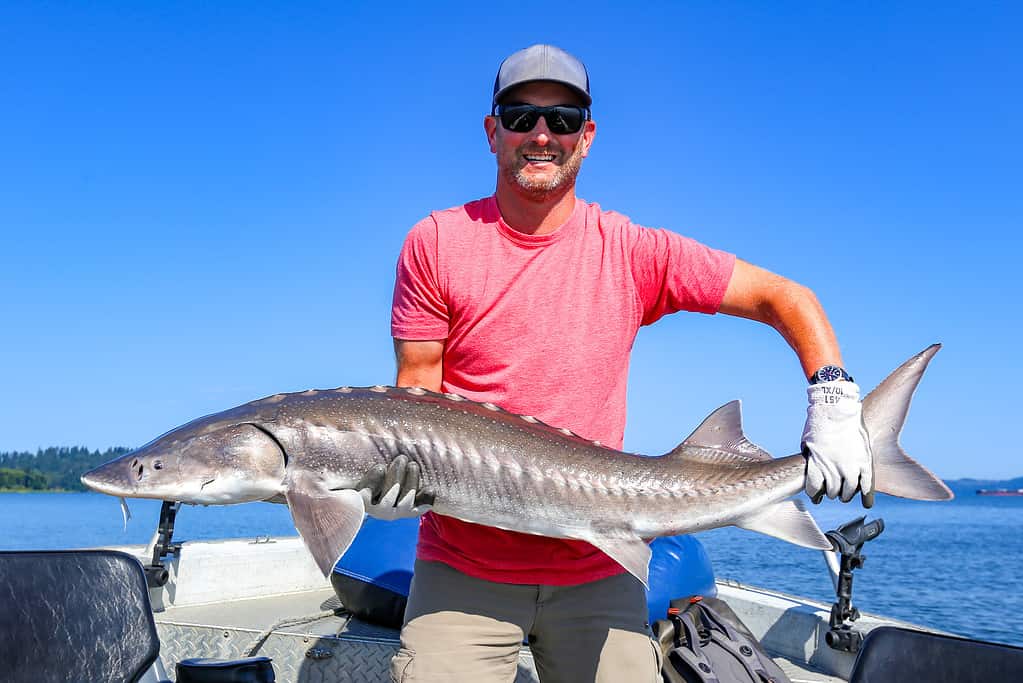
All sturgeon must be released upon capture, or the angler will suffer a heavy fine.
©christiannafzger/iStock via Getty Images
Not every fish is viable for the IGFA record. Certain reels, lines, bait, and other equipment may disqualify someone not following the specific guidelines for individual types and sizes of fish.
Here are some famous catches that are larger than the IGFA’s records:
- Former NHL goalie Pete Peeters landed an 890-pound white sturgeon on the Fraser River, in British Columbia, Canada. It measured 11 feet, 6 inches. Peeters posed with his prized catch before releasing it back into the river.
- In 2015, Chad Helmer reeled in a 1,000-pound albino white sturgeon on the Fraser River. Helmer took two hours to reel it in. After posing with the fish in the water near shore, it was released.
- August 5, 2022, Greg Poulsen and his wife caught a 600-pound sturgeon on the Snake River in Idaho. The couple told authorities it was like “reeling in a refrigerator.” They took several photos of the 10-foot fish before releasing it.
Why Do Fishers Release Their Catches
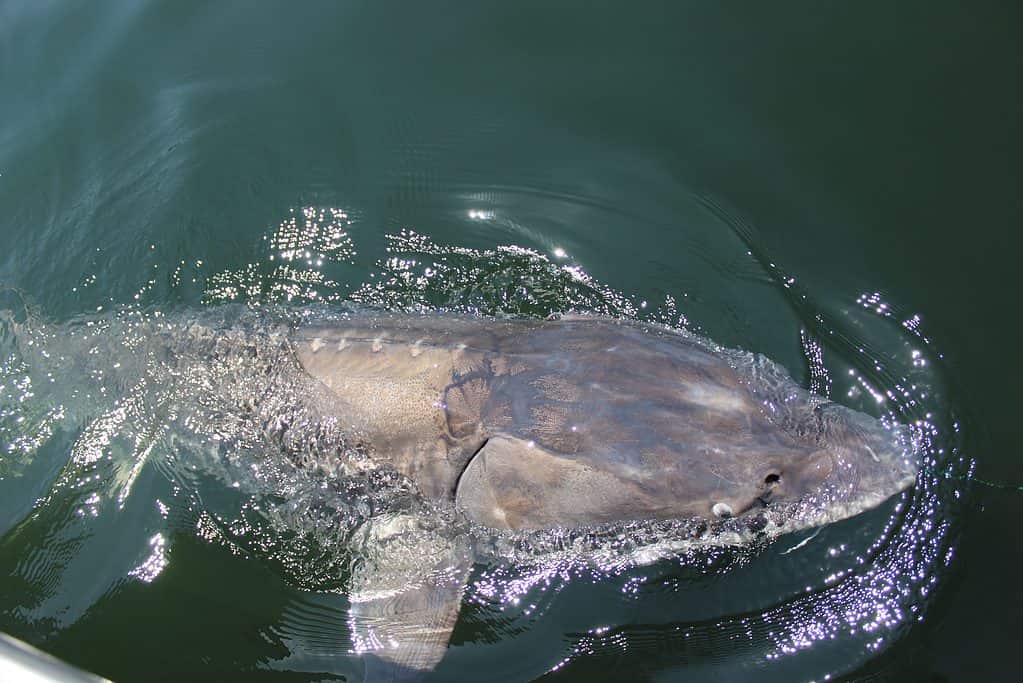
The Columbia and Fraser Rivers are popular places to find large sturgeon.
©Leah.Zastrow/Shutterstock.com
The idea of “catch and release” is a common custom in fishing. Anglers understand it would be dishonorable to end the fish’s long-lived life.
Additionally, sturgeons are critically endangered due to overfishing and the popularity of commercial fishing when they were first discovered. They were hunted for their caviar (fish eggs) which had to be cut open from the live fish. Because these fish only reproduce every one to five years, they have not repopulated quickly. Conservation efforts place laws on fishing sturgeon, ordering any fishers who capture one to release it back into the wild.
Anglers love and respect fish, wanting them to thrive in nature. Thanks to modern technology, they can capture photos of their catches as proof before releasing them back into the wild.
How Do They Get So Large?
Sturgeons live an exceptionally long life, 50-60 years on average with a few reaching 100. Many lake and river sturgeons have few natural predators, meaning they can continue eating and growing without issue until they succumb to disease.
When sturgeons are young, they are easy prey for lampreys and sharks. However, a mature sturgeon is so big that there are no fish in the same habitat capable of eating it.
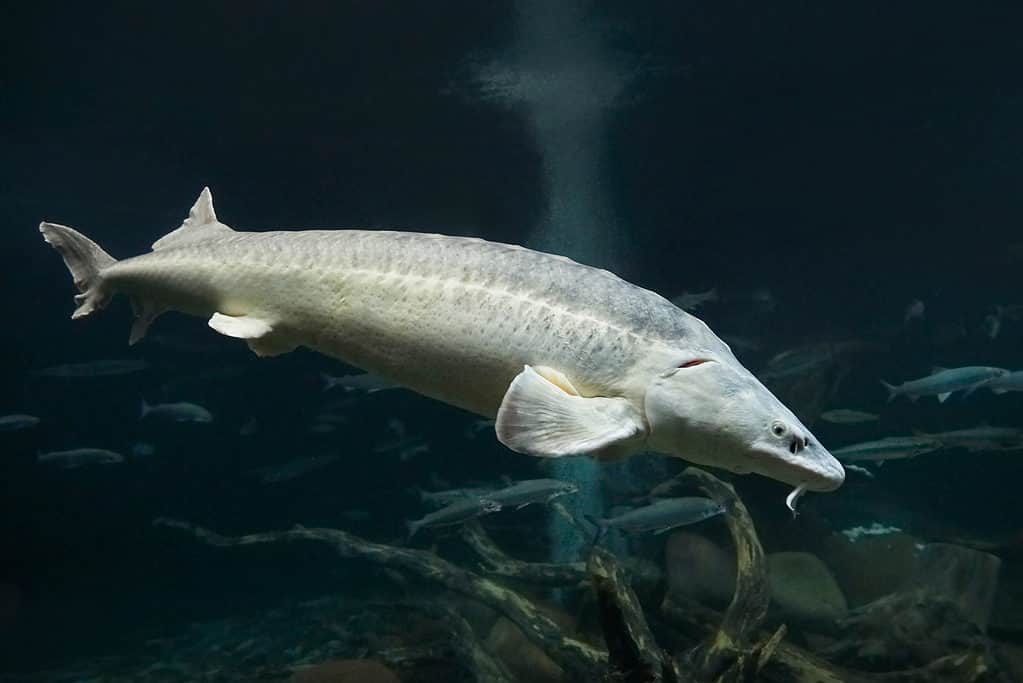
The U.S. and Canada have separate laws protecting different types of sturgeon.
©pixel creator/Shutterstock.com
Sturgeons are amazing creatures that still need help recovering from the damage of overfishing and the illegal trade of caviar and meat. They are massive creatures that inspire tall tales of a fish so big it could swallow you whole!
Thank you for reading! Have some feedback for us? Contact the AZ Animals editorial team.

